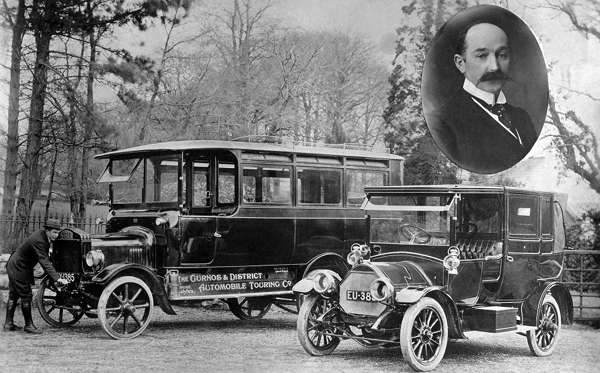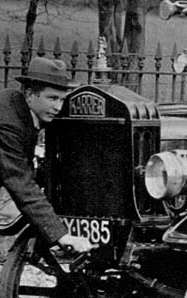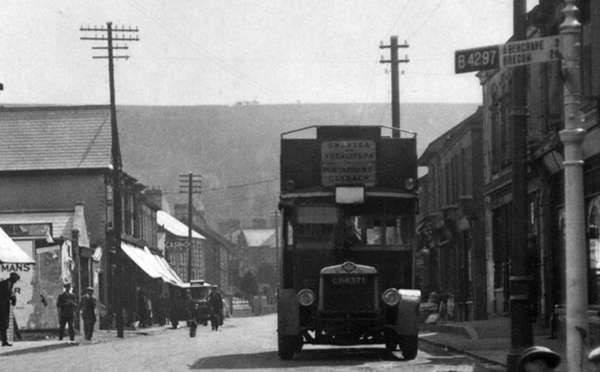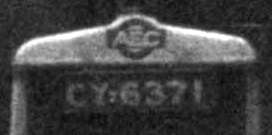Dating Old Photos from Buses
Dating Old Photos from Buses






I have a website for old photographs of the area where I live (Ystradgynlais) and, not being a bus person (sorry!), I was wondering if someone could kindly help date these two photographs from the buses.
Can anyone help? Many thanks!
Alan
15/11/13 - 06:55
CY 6371 was an AEC 503 with a Brush 54-seat open-top double-deck body new to South Wales Transport Company Limited in 1924. It was one of no less than twenty-five of the type bought that year. CY 6371 is one of six that were reported to operate a service from Swansea to Port Eynon on the Gower peninsula when new, so it is likely that the photograph is a year or two later. It would seem that the whole batch was withdrawn by 1932.
David Beilby
15/11/13 - 12:21
I notice that the bus has had its solid tyres replaced by pneumatic tyres. This would have happened in the 1920's, so we could hazard a guess of 1927 which narrows down to about five years when the photo was taken.
Not of interest to you, Alan, but the AEC503 was very similar to the London General's 'S' Class of the same period.
Can someone give any details of the Karrier bus in the upper photos, registered (almost certainly) as CY 1385. Shame the car plate is partly obscured. At least there are no proud driver/conductors blocking the registration, which so often happens in old photos!
Chris Hebbron
17/11/13 - 06:51
The early history of the Karrier company is very poorly documented in comparison with contemporary manufacturers of the early 20th century. The following piece has been gleaned from various places, but I fully accept that errors might well exist within. All corrections and additions are welcome.
In 1895 John George Dixon and Herbert Fitzroy Clayton set up Dixon Clayton and Company as general electrical and mechanical engineers at two sites in West Yorkshire - in Penistone and in Huddersfield. In 1899 the partnership was dissolved and Herbert Fitzroy Clayton (who apparently liked to be known as HFC) and his sons assumed control of the companies which were renamed Clayton and Company (Huddersfield) Limited and Clayton and Company (Penistone) Limited. From 1908 the Huddersfield works began manufacturing road vehicles under the "Karrier" name, while the Penistone works concentrated upon electrical engineering, including railway signalling equipment. The first Karrier model, known as the 'A' type, had the driver located over the Tylor engine and some sources say that the very earliest models had two cylinder engines. Transmission was by chain drive. In 1911 came the mechanically similar but bonneted 'B' type, and both the 'A' and 'B' types were available in goods or passenger carrying versions for loads of 1 to 5 tons. About 900 of these models were made by the time production finished. From 1913, Karrier produced a 3/4 ton 'Subsidy' model for the War Office in large numbers, around 2200 in total by 1921. The first charabanc to climb Porlock Hill in Somerset was a 50 hp Karrier, no doubt based on the "Subsidy" chassis, with 21 passengers in 1916. In 1920, the firm was renamed Karrier Motors Limited, and the 'Subsidy' or WDS chassis in 36 hp or, more usually, 50 hp options formed the basis of the new 3, 4 or 5 ton bonneted 'K' and (from 1922) the forward control 'SK' types. The 30 cwt 'C' and 2 ton 'D' types appeared in 1923. Again, some sources say that the 'C' type had a Dorman engine. From 1922 the 'H' type appeared for up to 26 seat bodywork. Somewhere around this time Karrier began making its own engines - the CL4 of 1923 was certainly so powered by a 4 cylinder motor of 5.2 litres. The 'Z' type for 14 seats became available from 1924. The firm then launched itself into the ultimately dead ended arena of six wheeled chassis, and the Karrier history from this time on is much better recorded.
I think that the top picture was almost certainly taken before the Great War. The bus is definitely a pre 1914 Karrier model, very probably a 'B' type, and the registration CY 1385 places it several years before the AEC 503, production of which totalled 148 between 1922 and 1925. The car alongside is definitely of pre 1914 vintage, and I believe it to be a Humber made around 1911. Some input from a veteran car expert would be welcome. The bewildering array of car manufacturers in the UK before WW1 may be gauged by a look at this list:- www.autogallery.org.ru/ Interestingly, the Clayton company still exists in Penistone, where it makes equipment for water treatment.
Roger Cox
17/11/13 - 16:58
Reading Roger Cox's comprehensive comments on early Karrier chassis, I am led to believe one was badged as 'Economist' which normally carried a 'torpedo' type of chara body. Does this ring a bell with anyone ?
David Allen
26/11/13 - 06:07
I'd earlier mentioned that the AEC503 bus had pneumatic tyres. As a further aid to timescale, commercial vehicles with solid tyres were restricted to 12mph until 1928, when limits for pneumatic-tyred vehicles were increased to 20mph. To encourage fast conversion to the safer pneumatic tyres, solid-tyred vehicles thus converted could also do 20mph. The advantages of so doing for buses were considerable; faster journeys and more comfort for passengers and crew. So 1928/29 is the most likely date of this photo.
Chris Hebbron
30/11/13 - 07:32
David, the 1913 "Economist" was simply a badge engineered version of Karrier chassis made for a motor trader called Stagg & Robson in Selby, North Yorkshire, who built the bodywork. As with contemporary Karriers, the final drive was by chain. Economists were offered in two forms, the smaller having a four cylinder Tylor engine and a 14 seat body. The larger model had the more powerful Tylor 7.7 litre JB4 "Subsidy" four cylinder engine giving 45bhp at 1000 rpm, and this was fitted with a charabanc 'torpedo' body for 30 passengers known as the "Blackpool" type. The term 'torpedo' was used to describe charabanc bodies that did not feature seating raised in tiers towards the rear of the vehicle - the seating was on the same level throughout. The London based Joseph Tylor & Sons company dated from 1768, and was variously situated in Belle Isle (a now obliterated area north of Kings Cross) and in Newgate Street, where, by the late 19th century, it made steam fittings and brasswork for a multitude of applications, together with a range of metering and sanitary equipment. In 1898 the business was reformed as a limited company, and diversified into petrol engine manufacture. By 1925, the factory was apparently located in Hammersmith. Quite when Tylor disappeared from the engine market I cannot establish, but the availability of numerous war surplus commercial chassis in the 1920s decimated the manufacturing industry of that time. Several of the firms that did survive went under in the depressed 1930s.
Roger Cox
02/12/13 - 07:32
Roger, thanks for information on the' Economist". I understand many of these vehicles were exported to South America (via Liverpool) from Stagg and Robsons. Selby before the company collapsed at the beginning of the First World War - and presumably the 'Economist 'chassis went too.
David Allen
Comments regarding the above are more than welcome please get in touch via the 'Contact Page' or by email at obp-admin@nwframpton.com
All rights to the design and layout of this website are reserved
Old Bus Photos from Saturday 25th April 2009 to Wednesday 3rd January 2024